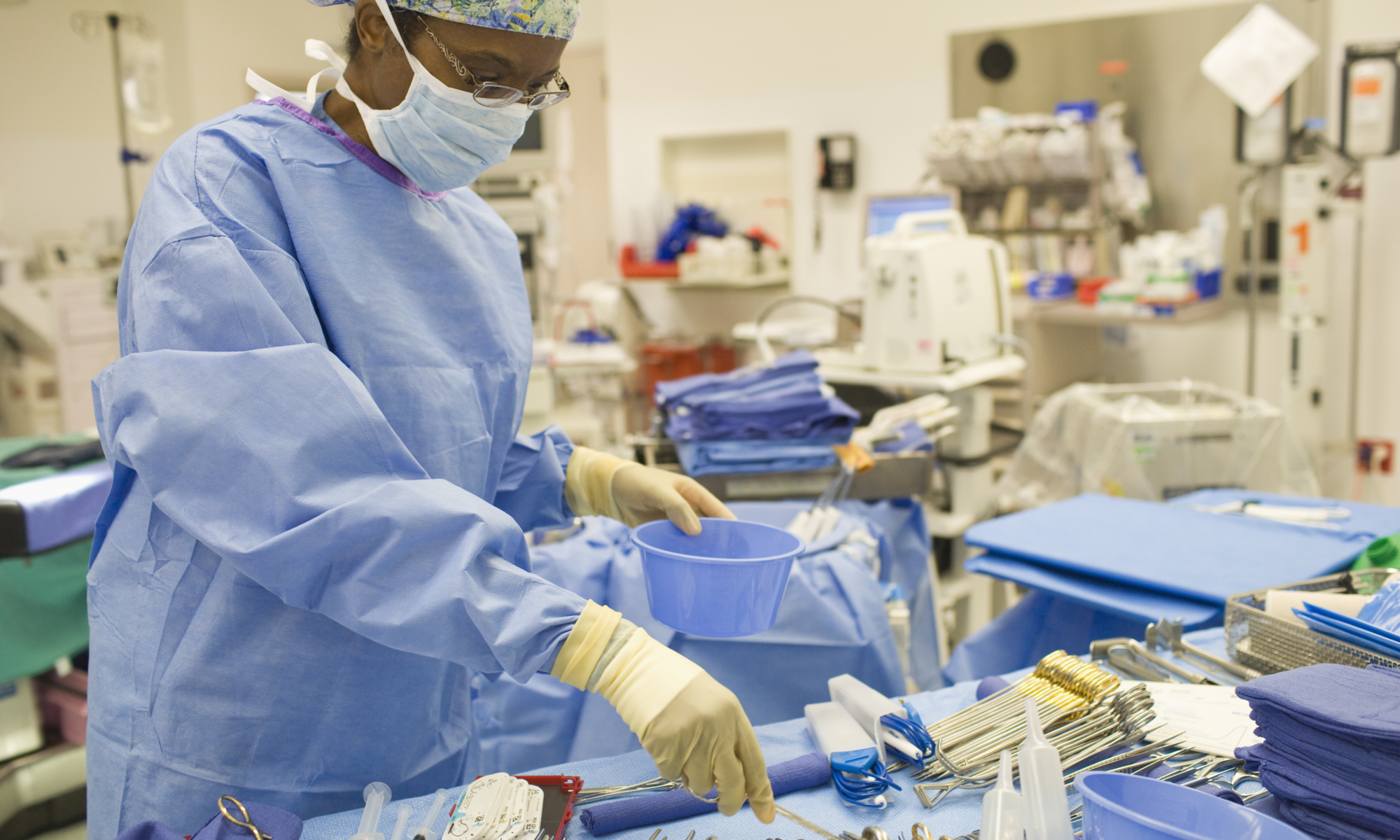Operating room trends shift how clinicians approach supply challenges

By Medline Newsroom Staff | August 18, 2022

The COVID-19 pandemic has had a tremendous impact on our society and how healthcare facilities operate. From staff and supply shortages to shutdowns and rising infection rates, clinicians have faced a great deal of instability. When it comes to the changes in product availability and traditional practices, much remains to be determined in this ever-shifting environment.
“Pre-pandemic, clinicians were known to hold reserves of trusted products ensuring they had access to the right products at the right time,” said Angela Carranza, Medline manager of clinical resources. “As the pandemic induced supply shortages that security blanket was limited because oftentimes, there were not enough products to go around.”
As healthcare facilities and clinicians felt the daily increased pressure of product and supply shortages, a change of thinking began to take root to ensure that quality patient care was still at the forefront. Things like product substitutions, spot buys, PAR rationalization, rethinking supply levels, data analysis, auto refills, and the use of more packs has come into play.
“It’s so important now, more than ever, to understand clinical supply processes and facility-based needs.”

Angela Carranza, CST, Lean Certified
Medline Manager of Clinical Resources
According to Carranza, the top three trends healthcare facilities operating in the perioperative environment should consider include:
- Leveraging data to find greater operational efficiency.
- The use of product substitutions to ensure the availability of critical products.
- Growing adoption of surgical packs for every phase of the surgical process.
Leveraging data
With the emergence of new data analysis techniques and the use of big data, healthcare facilities are able to make smarter decisions regarding product mix, on-hand quantity, and replenishment unit of measure. To be successful in this effort, healthcare facilities must get a firm understanding of all products they purchase and all products issued from the storeroom. Facilities must also have a full understanding of their purchase volume and the unit of measure their products are purchased in. With this firm understanding of their purchasing behavior and product utilization, healthcare facilities are able to develop a plan on what they really need. The key to successfully leveraging data to improve your facility’s operations is to engage closely with your supply vendor and clinical team to ensure the data being gathered is reflective of your true operations. From there, working cohesively with your supply partners and clinical teams will ensure you are able to bring meaningful change that meets your facility’s needs.
Product substitutions
COVID-19 induced supply chain shortages many healthcare facilities were unable to get the same products they grew to rely on. Product substituting is a process in which healthcare facilities review comparable products, explore alternative options, and ultimately find resources that fit their specific needs. Although driven by supply chain shortages in many cases, product substitutions also give clinicians a chance to re-evaluate what they do and how they do it, potentially finding new opportunities to streamline operations, find greater operational efficiencies, and financial savings. Another form of product substitutions is exploring the use of reprocessed medical devices. Single Use Device (SUD) Reprocessing is growing every year as the industry continues to be validated through scientific research to provide devices as good or better than new devices while reducing the environmental impact of the OR and diverting waste. During the pandemic, when many medical devices were in short supply, reprocessed SUDs filled the gap with great success. As the industry moves forward, this trend will continue to grow. Finding alternatives to your tried and true physician preference items may seem like a daunting task at the outset, however, once complete, payoff off can exceed expectations.
Surgical packs
Among these new trends, the use of surgical packs has come to the forefront in the perioperative environment as facilities work to simultaneously work through staff shortages, consolidation of providers, and budget tightening. Surgical packs enable clinicians to get every item they need to be packaged and ready to go in both sterile and non-sterile formats. From an efficiency perspective, surgical packs reduce setup time, create a standard of practice, improve storage, boost productivity, and reduce waste while optimizing product utilization and clinical accuracy. Surgical packs also simplify operations and reduce picking errors by using color-coded labeling and pack inserts that help identify packs and better organize storage.
“We’ve seen so many, but necessary, product substitutions that many facilities have lost sight of the original products they used. Some have completely discontinued while there has been a hope of return for others,” Carranza continued. “It’s so important now, more than ever, to understand clinical supply processes and facility-based needs. Surgical supply can have a dramatic impact on how clinicians deliver care, and these products are crucial in helping clinical teams do their job and do it with positive outcomes.”
Learn more about how Medline is helping ORs run better.
Medline Newsroom Staff
Medline Newsroom Staff
Medline's newsroom staff researches and reports on the latest news and trends in healthcare.
